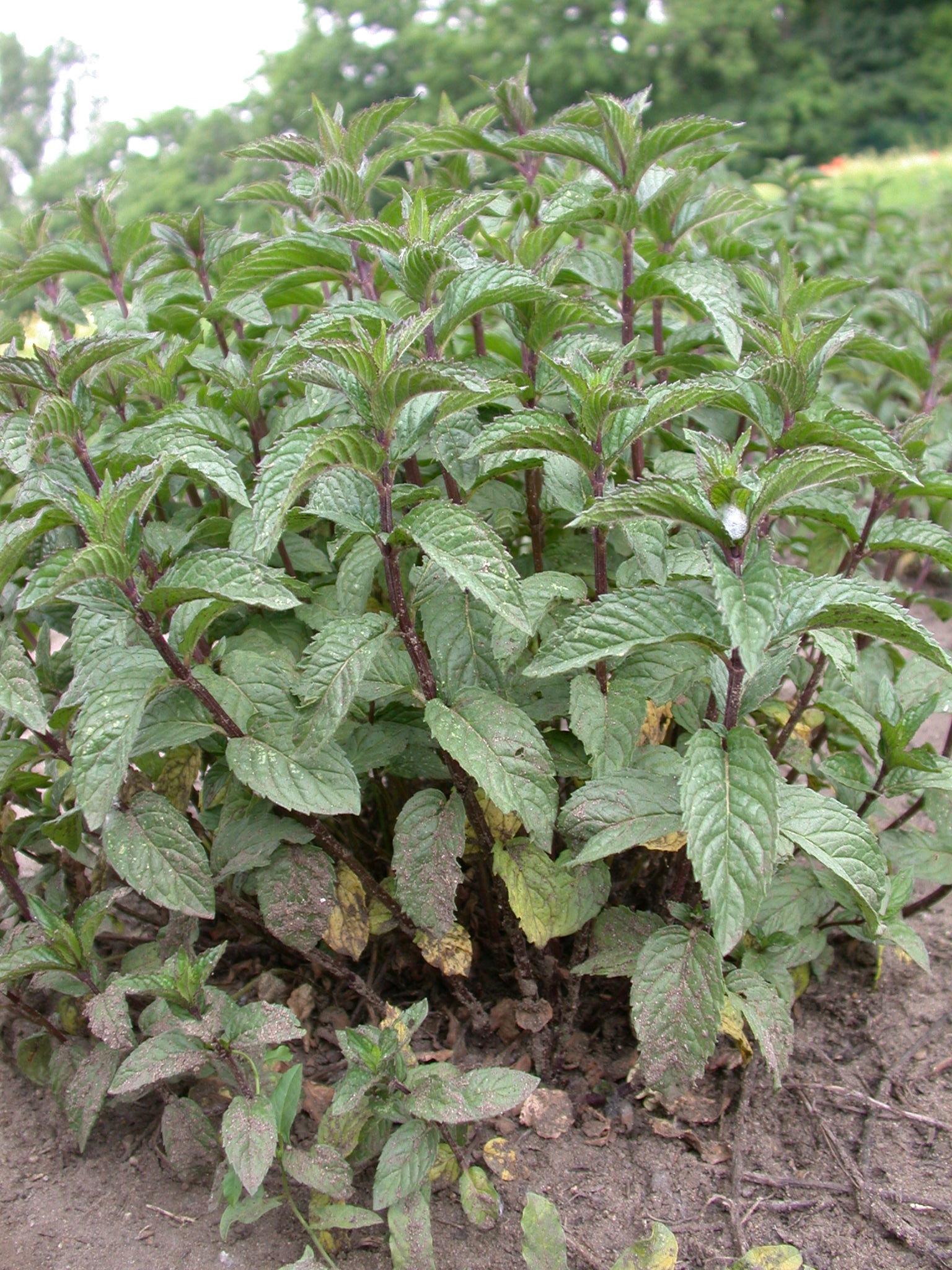Mentha x piperita – Peppermint
Mentha species belong to the Lamiaceae family. Peppermint is a herbaceous, perennial aromatic plant (H). The thin, 15-20 cm long roots develop from the 3-4 mm wide rhizomes. The plant is overwinter with its stolons. The stolons are branched, white, they can develop both roots and shoots. The plant grows to 30–90 cm tall, with smooth stems, square in cross section. The stems are often red from the accumulated antocyanidine. The leaves are 4–9 cm long and 1.5–4 cm broad, dark green with reddish veins, with an acute tips and serrate margins. Both the leaves and stems are usually slightly hairy. The flowers are purple, borne in spikes. Flowering lasts from mid to late summer. The fruits are small, reddish-brown, usually not viable. Mentha x piperita can be distinguished from the related species easily with their morphological species. Mentha spicata var. crispata doesn’t develop stolons and doesn’t accumulate antocyanidine. Its stems are 40-80 cm tall, light green, the leaves are wavy, dentate. Mentha arvensis var. sachalinensis grows taller than the other species and covered densely with hair.
The speciation of peppermint is caused by the spontaneous hybridization of Mentha aquatica L. and Mentha spicata. The species probably originates from England, but other suppositions are also known. Peppermint grows easily in warm, light places, wet, nutrient-rich soils.
The dried flowering shoots (Menthae piperitae herba), dried leaves (Menthae piperitae folium) and the essential oil, distilled from the fresh shoots (Menthae piperitae aetheroleum), are the drugs of peppermint. They are official in Hungarian Pharmacopoeia and in ESCOP-monographs. According to the standards the essential oil content of Menthae piperitae folium is at least 12 ml/kg.
The main active substance of Mentha x piperita is essential oil: the leaves contain 2-4 %, the flowers 4-6 %, while the stems don’t accumulate oil. The major compounds are menthol (40-60 %), menthone (20-25 %), piperitone (0.1-1.5 %), menthofuran, pinene and sabinene. Rosmarinic acid and flavonoids are also found in the stems.
Peppermint has antispasmolytic, anti-inflammatory, analgesic, antiseptic and cooling effect. Peppermint oil is recommended for treating gastric, gallbladder,bronchial disorders, cough, cold. Externally it is efficient for rheumatic problems, itchiness and hives. The leaves and the oil are important materials of food and cosmetic industry.


